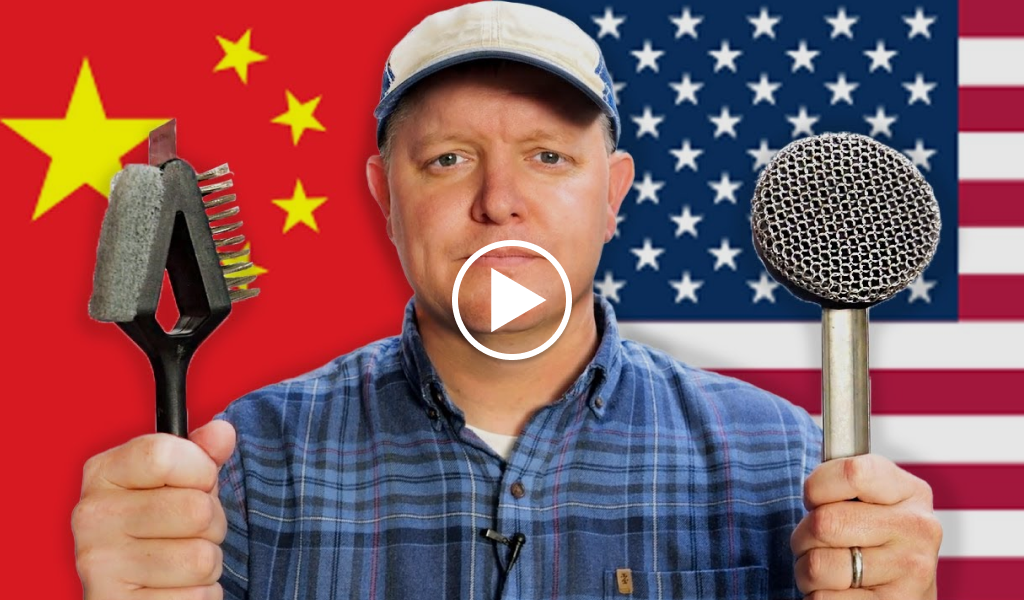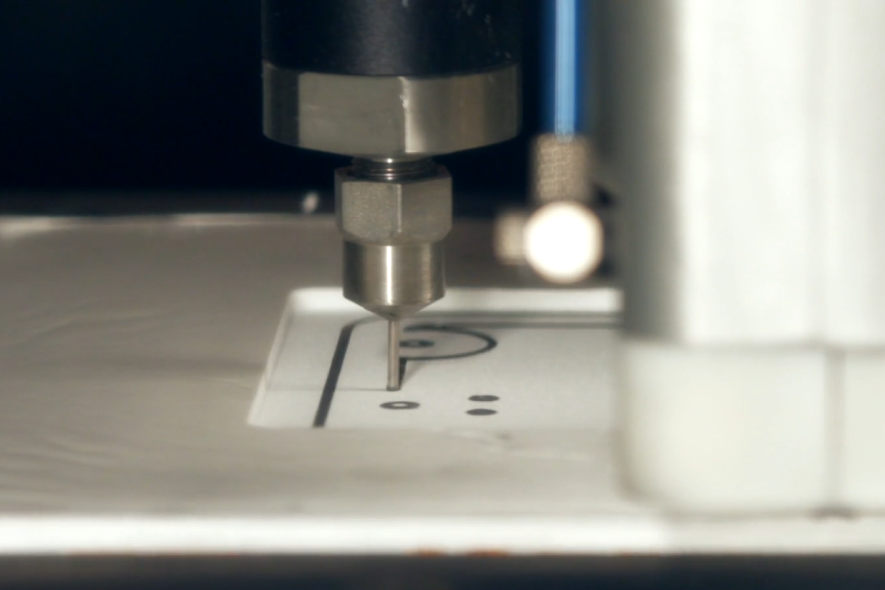
By Steve Connor, Ph.D., Mantle Co-Founder and Chief Science Officer
One obvious way that Mantle’s 3D printing technology differs from others is that we supply our material in the form of a flowable paste. People often ask us why we use paste. Here’s the answer.
When we began our work, we didn’t know we’d end up printing with a flowable paste, but we did know we wanted to target toolmaking. We knew that attributes like high dimensional accuracy and the ability to print thick wall sections were non-negotiable to toolmakers who require drop-in inserts to be used in their molds and dies. We considered many options — including powders, filaments, and inks — before deciding that pastes best met our needs.
The first of these options, bare metal powders, require considerable care in handling and storage before and after printing, as there are a number of environmental, health & safety (EHS) concerns as well as contamination risks. For example, there is potential inhalation risk, especially if powders are loaded manually into printers or are sieved outside the printer. Another issue is that great care must be used when changing from one powdered metal to another in a given printer to avoid contamination, which can compromise the structural integrity of printed parts and lead to premature part failure. Yet another challenge is that it is intrinsically challenging to move light, fluffy powder even under the controlled conditions inside a 3D printer, which can reduce dimensional accuracy during printing. Given all this, we knew we did not want to work with bare powders.
Encapsulating metal-injection molding (MIM) powders in a thermoplastic carrier in filament form makes handling and storage easier, but adds other complications. First, to get the solid polymer carrier to flow, you have to add not just heat but also high pressure to shear-thin the material (reduce viscosity enough for it to flow). This translates to high extrusion pressures during printing, which complicates printer design and creates other problems. Also, when injecting such materials into a constrained volume like a MIM metal mold, the material has time to flow and fill mold details prior to solidifying and freezing in place. However, in 3D printing, there is no constraining structure to hold and shape the molten material before freeze-off. You’re printing into an unconstrained volume of empty space, yet you want two contradictory things to happen at the same time. You want the material to stay in place and not flow away, which is only possible when viscosity rises and the material solidifies. However, you also want the material to fill in gaps before another layer of material is laid down, which is only possible when the material is molten and its viscosity is still low. You can see how taking a filament approach makes it challenging to achieve clean, defect-free prints. If we’d gone the route of filaments, we couldn’t have achieved the printing quality and dimensional accuracy we knew we needed for toolmaking.
Once we decided we wanted a flowable system to increase printing accuracy, our choice was between inks and pastes. We initially went down the path of nanoparticle inks because 3D printing with very fine particles means you need less energy to sinter them into strong parts with very low voids. However, the low viscosity of inks—even lower than molten thermoplastics—and their fundamental instability made them too hard to control. Inks want to keep flowing after deposition, making them challenging to create the geometry you want. Each layer is so thin that it’s a challenge to print thick enough layers to build up a large metal part in a timely manner. Also, most of the inkjet systems required complex machine constructions with hundreds to thousands of nozzles.
| Bare powders | Encapsulated MIM powders (filaments) | Inks | Pastes | |
| Handling / storage | Requires Considerable Care | Easy | Easy | Easy |
| Void-free | No | No | Yes | Yes |
| Ability to print thick walls | Yes | No | No | Yes |
| Print accuracy | Moderate | Lower | Low | High |
| Shrinkage during sintering | N/A | High | Medium | Low |
| Printer complexity | High | Low | High | Low |
After testing many different materials, we felt that a flowable metal paste would best meet our core needs for a number of reasons. First, by using a multicomponent paste whose viscosity is tunable at different temperatures, we can print very accurately and fill gaps after extrusion while preventing thick sections from slumping or flowing out of position. This also permits us to achieve high printing density, which means we achieve parts with excellent surface finish and high mechanical properties, Second, pastes simplify handling and storage issues with other feedstocks and provide a long self-life. Third, paste has a low shrinkage rate of 8-10% during sintering, which helps us meet toolmakers’ accuracy requirements. Fourth, paste also allows us to use a much simpler machine design with our printer: we only need one nozzle instead of hundreds or thousands, which reduces cost and simplifies maintenance.
In the years following the selection of a paste system, we worked to find the best formulations and alloys that allowed us to balance competing factors between printing and sintering. We needed a paste to be thin enough to print fine details but stable enough after printing so that part walls do not sag and collapse. At the same time, we had to formulate the source metals to balance hardness and ductility, optimizing the durability needed for tooling.
After much work to pull it all together, we feel this flexible delivery system allows us to achieve the outcomes that are required for precision metal components such as prototype and production tool inserts.
To learn why we opted to create a P20-equivalent tool steel first and then an H13 tool steel check out this blog.
ADVANTAGES OF MANTLE’S FLOWABLE METAL PASTE DELIVERY PLATFORM
- Flexible platform that offers both excellent filling (for void/defect-free parts) and high packing density (for dense, strong parts after sintering).
- Ability to print fine details and hold tight dimensions because of low shrink rate of 8%-10%.
- Safer and simpler to use and handle than loose powders.
ABOUT STEVE:
Steve Connor, Ph.D., is the Co-Founder of Mantle and its Chief Science Officer. He has 15 years of experience in materials development at both top academic laboratories and in industry. He holds a doctorate in Chemistry from Stanford University and a B.S. degree in Chemistry from the University of California-Berkeley.


